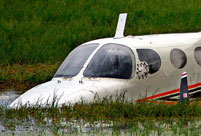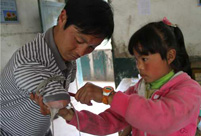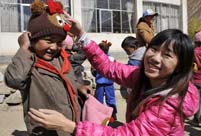Respecting and protecting freedom of religious belief
According to the Constitution of the People's Republic of China, Chinese citizens enjoy freedom of religious belief as a basic right. In Tibet, Tibetan Buddhism, Bon, Islam, Catholicism and some other religions coexist, and there are different sects within Tibetan Buddhism. After the democratic reform, Tibet abolished feudal serfdom under theocracy and separated religion from government, removed what had been tarnished by feudal serfdom and restored the true nature of religion, realizing true freedom of religious belief and religious tolerance between different religious beliefs and sects. The Central Government and the government of the Tibet Autonomous Region fully respect citizens' freedom of religious belief, respect and protect all religions and sects, and protect normal religious activities and beliefs according to law. Currently, Tibet has 1,787 places for different religious activities, over 46,000 resident monks and nuns, and 358 Living Buddhas. The majority of the people in Tibet believe in Tibetan Buddhism. Traditional religious activities such as scripture learning and debate, degree promotion, initiation into monkhood or nunhood, abhisheka (empowerment ceremony) and self-cultivation are held on a regular basis, while ceremonial activities are also held at important religious festivals. Living Buddha reincarnation is a special succession system of Tibetan Buddhism and is respected by the State. So far, over 40 incarnated Living Buddhas have been confirmed through traditional religious rituals and historical conventions.
In present-day Tibet it is not difficult to see prayer flags, Mani stones inscribed with Buddhist scriptures, and believers taking part in religious activities. Ordinary believers usually have a scripture hall or a Buddha shrine at home, and such religious activities as circumambulation while reciting scriptures, Buddha worship, and inviting lamas or nuns from monasteries to hold religious rites are normally conducted. The Tibet Autonomous Region and its seven prefectures or cities have each set up a Buddhist Society; the Tibet Branch of the Buddhist Association of China runs a Buddhist college, a sutra printing house, and a Tibetan-language journal - Buddhism in Tibet. Tibet has protected and repaired murals, carvings, statues, Thangka, sutras, religious ritual implements, shrines, and some other carriers of religious culture. It has also salvaged, collated and published a great number of religious books and records. It has promoted the development of conventional sutra printing houses at monasteries. There are now nearly 60 such sutra printing houses in Tibet, including one in the Moru Monastery and one in the Potala Palace; they print 63,000 sutra titles every year. In addition, there are 20 private shops selling these sutras. Regarding religious management, the State upholds the policy of separating religion from government; it strengthens the administration of religious activities according to law, prohibits religion from intervening in the country' s administration, justice system and education, and allows no individual or organization to use religion for illegal activities.
【11】 【12】 【13】 【14】 【15】 【16】 【17】 【18】 【19】 【20】
【21】 【22】 【23】


 No news of survivors in Lao Airlines crash
No news of survivors in Lao Airlines crash Five fighters in flight training
Five fighters in flight training London mayor hails free trade, subway system on China tour
London mayor hails free trade, subway system on China tour Different eye catching shows at housing fairs in China
Different eye catching shows at housing fairs in China Chalk it up to great courage
Chalk it up to great courage Tibetan girl helps mobilize volunteers onlin
Tibetan girl helps mobilize volunteers onlin Lingerie show dazzles Wuhan Motor Show 2013
Lingerie show dazzles Wuhan Motor Show 2013  Chinese screen goddesses from Beijing Film Academy
Chinese screen goddesses from Beijing Film Academy  Weekly Sports Photos
Weekly Sports Photos Bayi Parachute Team of PLA Air Force
Bayi Parachute Team of PLA Air Force World has never been dark-- a blind kid’s life in Tibet
World has never been dark-- a blind kid’s life in Tibet Change to law may make it easier to sue polluters
Change to law may make it easier to sue polluters UNESCO world heritage site: Montale Tower
UNESCO world heritage site: Montale Tower U.S. Senate leader announces bipartisan deal
U.S. Senate leader announces bipartisan deal Fiber-optic wedding dress show shinning in Suzhou
Fiber-optic wedding dress show shinning in Suzhou Day|Week|Month